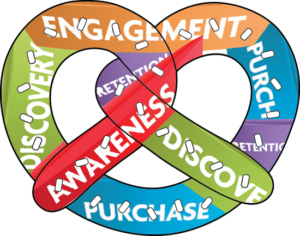What is email attribution?
Email marketing attribution refers to data-collection efforts in which the marketer tries to determine whether email was responsible for a revenue-generating action (a sale, a subscription sign-up, or a donation, for example) or not. With some attribution models, an email might receive a percentage of the credit for a conversion while another channel receives the remainder of the credit. With other models, email will only either receive all of the credit or none of the credit for a conversion. There are many different attribution models, each with different strengths and weaknesses.
When choosing an attribution model for your business, it’s important to remember that no attribution model is perfect. The goal is simply to use an attribution model that helps you determine which channels are most effective for converting customers and which ones are the least effective. But take the data you collect with a grain of salt, keeping in mind that most customer journeys are extraordinary complex.
While we marketers would like the customer journey to look like a nice clean funnel, where the prospect moves from stage to stage and channel to channel, the real customer journey often ends up looking more like a pretzel than a cone.

Still, attribution is important to track for your business and email marketing efforts. Here’s why.
Why is email attribution important?
Email attribution is important for the same reason that understanding marketing trends, data, and analytics is important: because the more you learn about your current marketing campaigns, the better you can optimize them for the future. If you learn, for instance, that one particular paid advertising channel is having an insignificant impact on revenue, then you might save money by removing that from your repertoire. Similarly, if you find, using attribution, that some email campaigns convert better than others, you might try and model the high-performers and do away with the stalemates. The more you learn, the better you can market to your audience.
And while no attribution model is perfect, each will teach you something new about your audience and your marketing materials.
